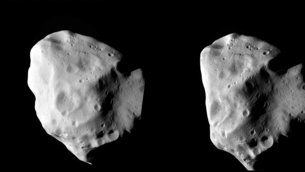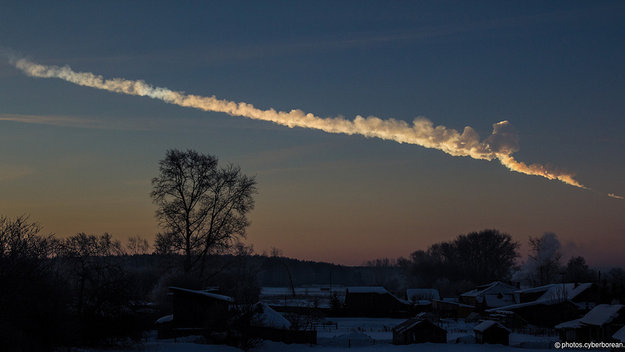-
15 000 SPACE ROCKS AND COUNTING
The international effort to find, confirm and catalogue the multitude of asteroids that pose a threat to our planet has reached a milestone: 15 000 discovered – with many more to go.
The number of catalogued asteroids approaching Earth has grown rapidly since the count reached 10 000 only three years ago.
Near-Earth objects, or NEOs, are asteroids or comets with sizes ranging from metres to tens of kilometres whose orbits come close to ours, meaning they could hit our planet.
The discovered NEOs are part of a much larger population of more than 700 000 known asteroids in our Solar System.
“The rate of discovery has been high in the past few years, and teams worldwide have been discovering on average 30 new ones per week,” says Ettore Perozzi, manager of the NEO Coordination Centre at ESA’s centre near Rome, Italy.
“A few decades back, 30 were found in a typical year, so international efforts are starting to pay off. We believe that 90% of objects larger than 1000 m have been discovered, but – even with the recent milestone – we’ve only found just 10% of the 100 m NEOs and less than 1% of the 40 m ones.”
Today, the two main discovery efforts are in the US: the Catalina Sky Survey in Arizona, and the Pan-STARRS project in Hawaii, jointly accounting for about 90% of the new bodies found.
ESA is contributing through its Space Situational Awareness programme, setting up the centre in Italy to combine new and existing European telescope data and support a new network to distribute information.
Maintaining the European risk list
“The centre maintains the European Risk List, containing all objects for which an Earth-impact probability cannot yet be ruled out, however low,” says Detlef Koschny, heading the NEO element of the Space Situational Awareness office.
“There is only a tiny impact probability for any known object in the next 40 years, but all NEOs bear close watching to refine and understand their orbits.”
The coordination centre is also the focal point for scientific studies needed to improve warning services and provide near-realtime data to scientific bodies, international organisations and government decision-makers.
In recent years, astronomers working with or sponsored by ESA have concentrated on follow-up observations, confirming new objects and obtaining more reliable orbits. Some of this work was done with ESA’s own observatory on Tenerife in the Canary Islands.
Others have been instrumental in imaging or confirming the orbits of particularly interesting objects, such as asteroid 2016 RB1, which grazed our planet on 7 September 2016 by 34 000 km, within the orbit of many telecom satellites.
ESA is developing new ‘fly eye’ telescopes to conduct automated nightly wide-sky surveys with their very large fields of view. These are expected to begin operating around 2018. The Large Synoptic Survey Telescope, being built in Chile, is set to begin hunting space rocks in the near future.
These future telescopes offer the almost complete sky coverage and depth needed for humanity to be sure that as many NEOs as possible are discovered and identified before posing any threat.
Quelle: ESA
---
Catalog of Known Near-Earth Asteroids Tops 15,000

› Larger view
The number of discovered near-Earth asteroids (NEAs) now tops 15,000, with an average of 30 new discoveries added each week. This milestone marks a 50 percent increase in the number of known NEAs since 2013, when discoveries reached 10,000 in August of that year.
Surveys funded by NASA's Near Earth Object (NEO) Observations Program (NEOs include both asteroids and comets) account for more than 95 percent of discoveries so far.
The 15,000th near-Earth asteroid is designated 2016 TB57. It was discovered on Oct. 13 by observers at the Mount Lemmon Survey, an element of the NASA-funded Catalina Sky Survey in Tucson, Arizona. 2016 TB57 is a rather small asteroid -- about 50 to 115 feet (16 to 36 meters) in size -- that will come closest to Earth on Oct. 31 at just beyond five times the distance of the moon. It will safely pass Earth.
A near-Earth asteroid is defined as one whose orbit periodically brings it within approximately 1.3 times Earth's average distance to the sun -- that is within 121 million miles (195 million kilometers) -- of the sun (Earth's average distance to the sun is about 93 million miles, or 150 million kilometers). This distance also then brings the asteroid within roughly 30 million miles (50 million kilometers) of Earth's orbit. Observers have already discovered more than 90 percent of the estimated population of the large NEOs -- those larger than 0.6 miles (one kilometer).
"The rising rate of discovery is due to dedicated NEO surveys and upgraded telescopes coming online in recent years," said NASA's NEO Observations Program Manager Kelly Fast. "But while we're making great progress, we still have a long way to go." It is estimated by astronomers that only about 27 percent of the NEAs that are 460 feet (140 meters) and larger have been found to date. Congress directed NASA to find over 90 percent of objects this size and larger by the end of 2020.
Currently, two NASA-funded NEO surveys -- the Catalina Sky Survey and the Panoramic Survey Telescope & Rapid Response System (Pan-STARRS) in Hawaii -- account for about 90 percent of new NEO discoveries. Both projects upgraded their telescopes in 2015, improving their discovery rates.
A recent upgrade to one of the Catalina Sky Survey's telescopes resulted in a tripling of its average monthly NEO discovery rate. When the Pan-STARRS system increased the observing time it devoted to NEO searching to 90 percent, it increased its rate of discovery by a factor of three. Pan-STARRS also will add a second telescope to the hunt this fall. As more capable telescopes are deployed, the overall NEO survey effort will be able to find more objects as small as and smaller than 140 meters (460 feet).
The NEO Observations Program is a primary element of NASA's Planetary Defense Coordination Office, which is responsible for finding, tracking and characterizing potentially hazardous NEOs, issuing warnings about possible impacts, and coordinating U.S. government planning for response to an actual impact threat.
"While no known NEO currently poses a risk of impact with Earth over the next 100 years," says NASA Planetary Defense Officer Lindley Johnson, "we've found mostly the larger asteroids, and we have a lot more of the smaller but still potentially hazardous ones to find."
Quelle: NASA



